You might have taken on a few small home improvement projects over the coronavirus pandemic, or you might be considering DIY projects with the current cost of living crisis in the UK. But now you’re asking “can you lay tiles over tiles?” It’s a good question to ask. With the home improvement trend being here to stay it’s worth learning how to tile for yourself so that you can create custom tiling work that you’re proud of and will last the test of time.
Here’s what you need to know about laying tile for yourself.

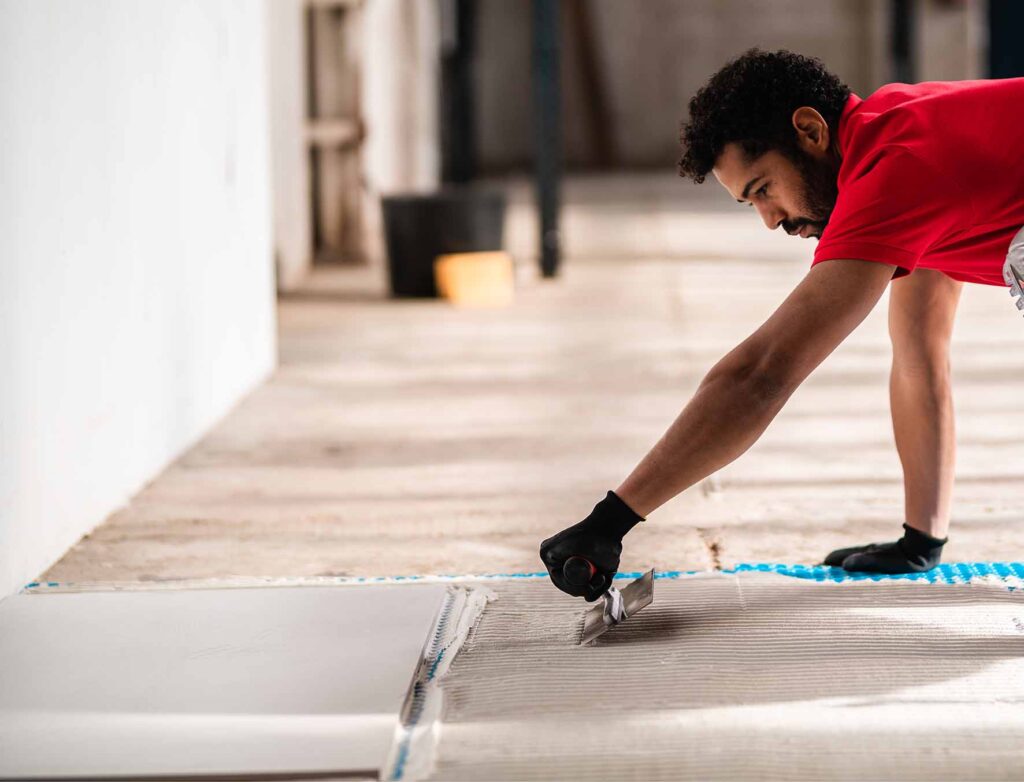
WHERE CAN YOU LAY TILE IN YOUR HOME?
While it’s most common to install tile in the kitchen and bathroom, there are many other tiling ideas that you can implement in your home. As a strong, water-resistant material that’s easy to clean, tile works best in rooms where water exposure is likely. That’s why it’s used so often in bathrooms and kitchens.
However, you can use tile for any room in your home! If you want a Grecian-inspired, mosaic tile living room floor, go for it! If you want to try mixed media tiled flooring on your bedroom walls, nothing is stopping you. Tile also makes an exceptional surrounding material or background for a fireplace.
SHOULD YOU TRY DIY JOBS WITH TILE?
There are certain renovations that you should never attempt to do yourself when it comes to home improvement. These include plumbing adjustments, roofing, electrical work, or anything to do with gas lines. So long as your tiling job won’t overlap with any of those projects, you should be good to go.
BEFORE YOU GET STARTED, CONSIDER THE FOLLOWING
While you can lay tile yourself, you should make sure you consider all the factors before you begin. Renovating flooring by yourself can be an in-depth process, so keep the following in mind before you begin:
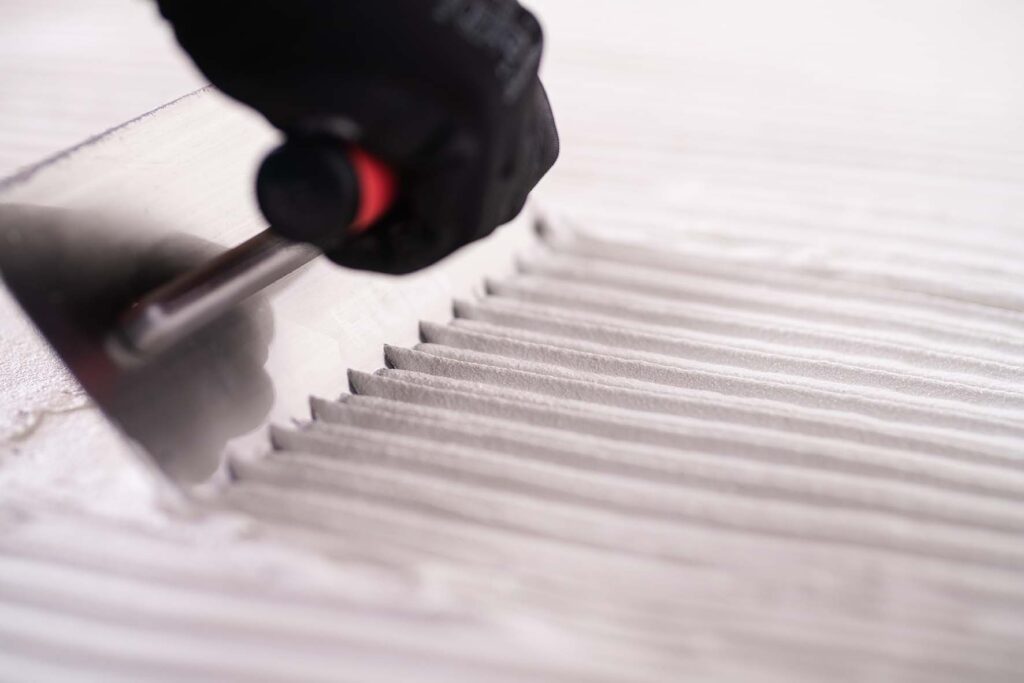
DO YOU HAVE THE RIGHT TOOLS?
Laying tile is an intensive process that requires specialised tools, especially if you want to or need to remove the existing flooring or surfacing. We’ll go over the tools you may need below. However, even acquiring these tools (if you don’t already have them) can be an expensive endeavour.
Check your current stock of renovation tools to ensure you have what you need. If you don’t, feel free to browse our full catalogue of products to fill any gaps.
DO YOU HAVE THE EXPERTISE?
One of the main reasons why people hire contractors for tiling projects is because of their expertise. We’re not saying that you need to be an expert in tile laying, but you do need to have an exacting eye for details and measurements. If you don’t have that, then your project will look less like a gorgeous DIY and more like a “D-I-Why.”
IS IT CHEAPER IN THE LONG RUN?
Another common reason that people consider doing their own home improvement project like custom tile installation is due to the misconception that it might be cheaper to do it themselves. However, if you lay your tile incorrectly, you might have to redo entire project. This will add to your expenses for materials, not to mention lengthen the project’s timeframe. Speaking of…
DO YOU HAVE THE TIME FOR THE PROJECT?
In the hands of a professional, tile-laying shouldn’t take too long. However, if you lack their experience, it will of course take longer to finish your project.
In addition, while you’re working on tiling, you may be unable to use your shower, bathroom, kitchen, or fireplace. Because of this, make sure you have the time to finish the project to your satisfaction before you get started.
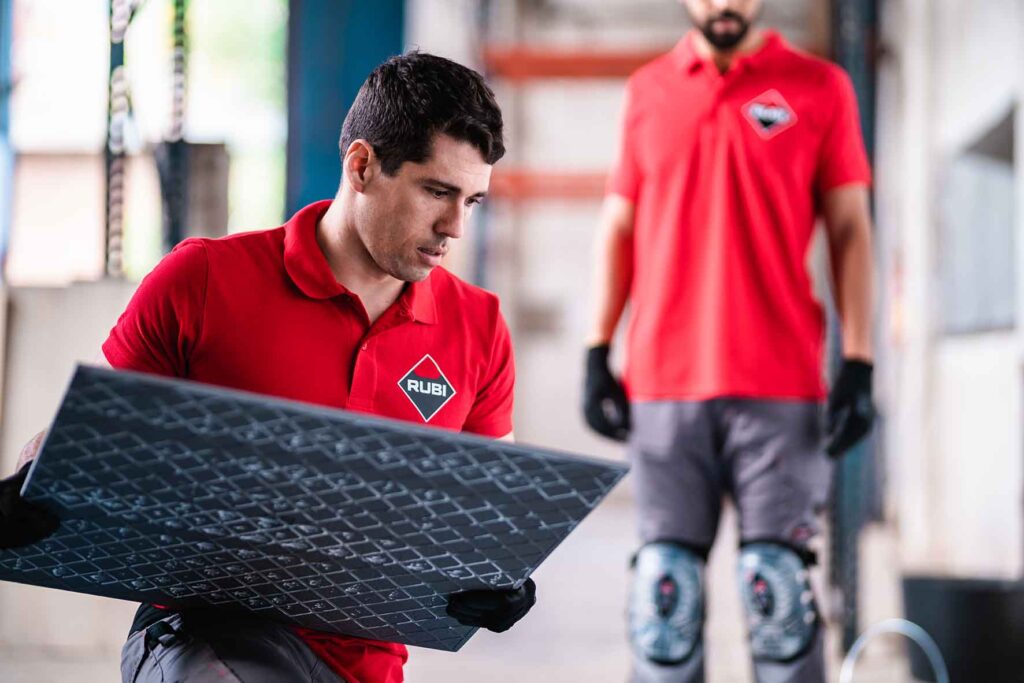
CAN YOU LAY TILES OVER TILES?
Now, the operative question: Can you lay tiles over tiles? The simple answer is, “Yes, you can.” However, the more accurate answer is that it depends.
Here’s what you’ll need to establish before you start laying new tile over the old.
DOES THE OLD TILE RETAIN MOISTURE?
This should be your top concern. If the older tile retains moisture or shows signs of mould or mildew, you should not attempt to lay the new tile over the old. Trapped water can cause both old and new tiles to rot. Worse, you could wind up with a mould or mildew infestation that could cause severe health consequences for you and your family.

IS THE OLD TILE IN GOOD CONDITION?
Next, you need to ensure that the old tile is in good condition. It might seem counterintuitive for you to worry about the status of the old tile when you’re retiling.
However, if you lay your new tiles over cracked, broken, or loose tiles, they may not adhere properly.
This proves especially important when you’re tiling a floor, as your floors take much more daily pressure than your walls. Therefore, tile floors and walls need a solid foundation to work properly.
WHAT WILL YOU NEED TO LAY TILES OVER TILES?
With all those considerations out of the way, let’s get down to business. If you want to do your custom tile installation yourself, you will need to have certain tools.
YOUR CHOICE OF TILE (AND REPLACEMENTS FOR BROKEN ONES)
To begin, you will need your new tile for the project. Depending on the material you’re working with, you may need special tools to ensure proper installation. (Ceramic tile, for instance, requires spacers to lay properly.)
If any of your base tiles are broken, you may also need spare tiles to replace those and give you a strong foundation for your new tile.
TILE CUTTERS
It is very rare, even with professionals, that you will achieve “full tile bingo” in your renovation. That is to mean you don’t have to cut any tiles when laying from wall to wall or floor to ceiling. So, chances are, you will need something to cut your tiles.
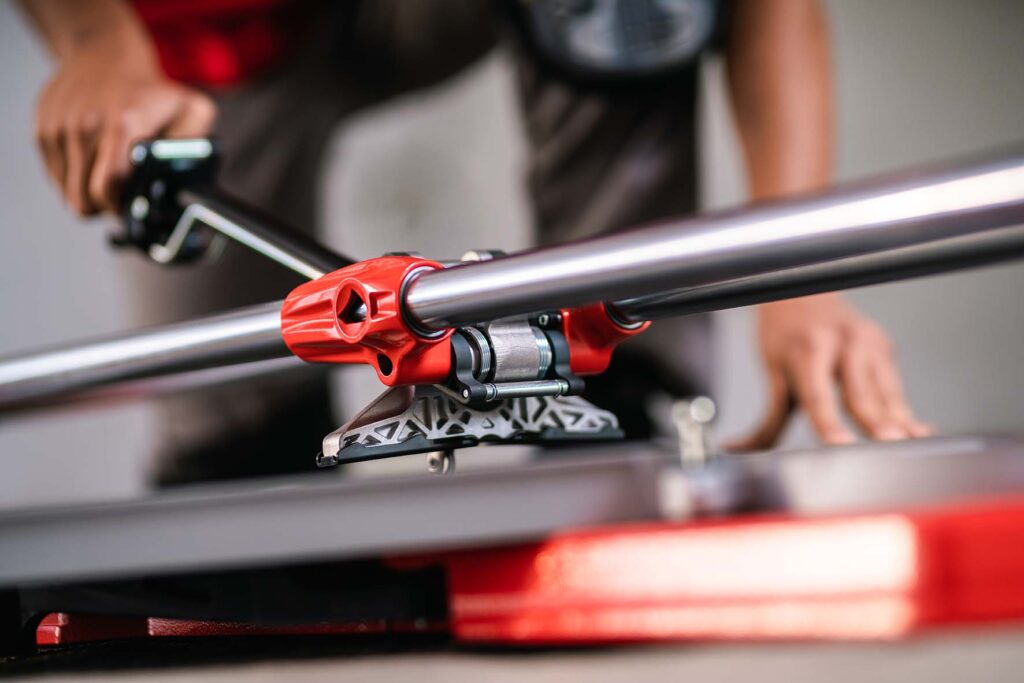
Luckily, we make a variety of manual tile cutters which will reduce the amount of dust and mess made, and they’re quick and easy to use. View our full range here.
You might also need a grinder with a few diamond blades and drill bits for any awkward cuts around windows or other fixtures and fittings in your room. Again, we make many diamond blades and drill bits for grinder so you can find the right option for you with the material you decide to use by viewing our range on our website.
PERSONAL PROTECTIVE EQUIPMENT
Cutting, filing, and working with ceramic can generate a lot of dust, which is dangerous enough on its own. Ceramic dust, though, can have disastrous health consequences if you breathe it in. So, make sure you have a dust mask and goggles to protect your face and eyes.
TILING ADHESIVE AND GROUT
When you are ready to lay your new tiles, you will need adhesive for them to stick to the surface and grout to fill any gaps.
LAYING TILES OVER TILES: HANDLING TILE INSTALLATION LIKE A PRO
Now, the fun part! First, let’s go over the steps you need to take to install tile over tile like a professional.
PREPARING YOUR TILES FOR THE INSTALLATION
- First, you need to clean your old tiles. You can do this while examining them for cracks and dents, as well as any other signs of damage.
- Next, make sure that you replace any dented or cracked tiles with spares to give yourself a solid base.
- Then, sand everything down until it feels rough to the touch. After this step, it is time to apply the primer. Primer is important because many tile adhesives require porosity to adhere correctly. In addition, it’s likely that you are tiling over glazed tiles, which don’t have accessible pores. Primer solves this problem because it can stick to the glazed tiles and is also very porous, which means that the tile adhesive will adhere to it once it is dry.
- Once you have applied your primer, you can apply a coat of thin-set mortar. Make sure to fill in the current grout lines so that you have a flat base on which to lay your new tile. Let the mortar cure for around twenty-four hours before you start the next step.
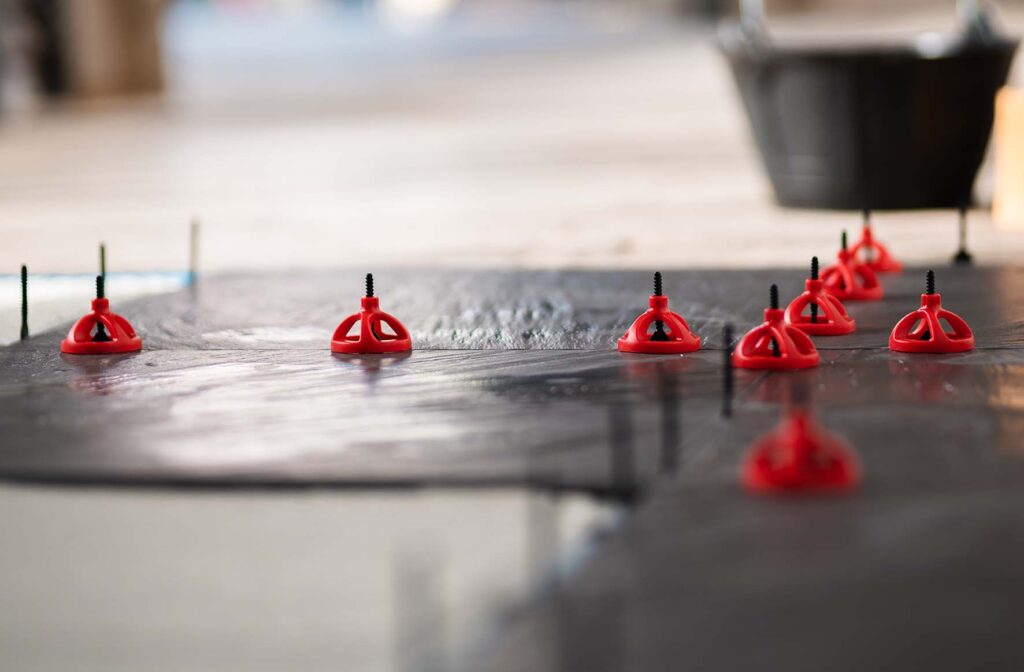
LAY YOUR NEW TILES
Using your tiling adhesive or mortar, start laying your new tiles. A little trick to keep in mind here is that it is good to lay tiles from different boxes next to each other because this way, you avoid laying tiles with small colour and dimensional imperfections next to each other.
Make sure to go slowly and lay them straight so that they do not look odd. Afterward, grout your new tiles and fill in any gaps left behind with caulk to seal them. If your custom tile installation is in a room with water exposure, make sure that you apply a sealant to the tile as well.
Bear in mind that accidents happen, especially if you try to do something complicated like tile installation. So be prepared, knowing that it is likely that you’ll drop a tile or that for some reason or another, a few of your tiles will break.
Therefore, it is best to buy between 5% and 10% more tile than what you’ve calculated you actually need to cover the loss in damages.
Allow your new tile time to dry and cure, and then you should be all set!
CAN YOU LAY TILES OVER TILES? LET’S REVIEW THE BASICS!
You can lay tile over tile in any room of your house. However, as with any DIY project, you need to make sure that you have the tools, techniques, and time to complete it. If you lack these, it might be better to call a professional.
If you are willing to put in the elbow grease to make it work, you can handle your tile laying project on your own. However, if you need help getting the right tools for the job, we at RUBI Group are happy to assist! Whether you need levels, mallets, or grinding tools, we have the wide selection of everything you need.


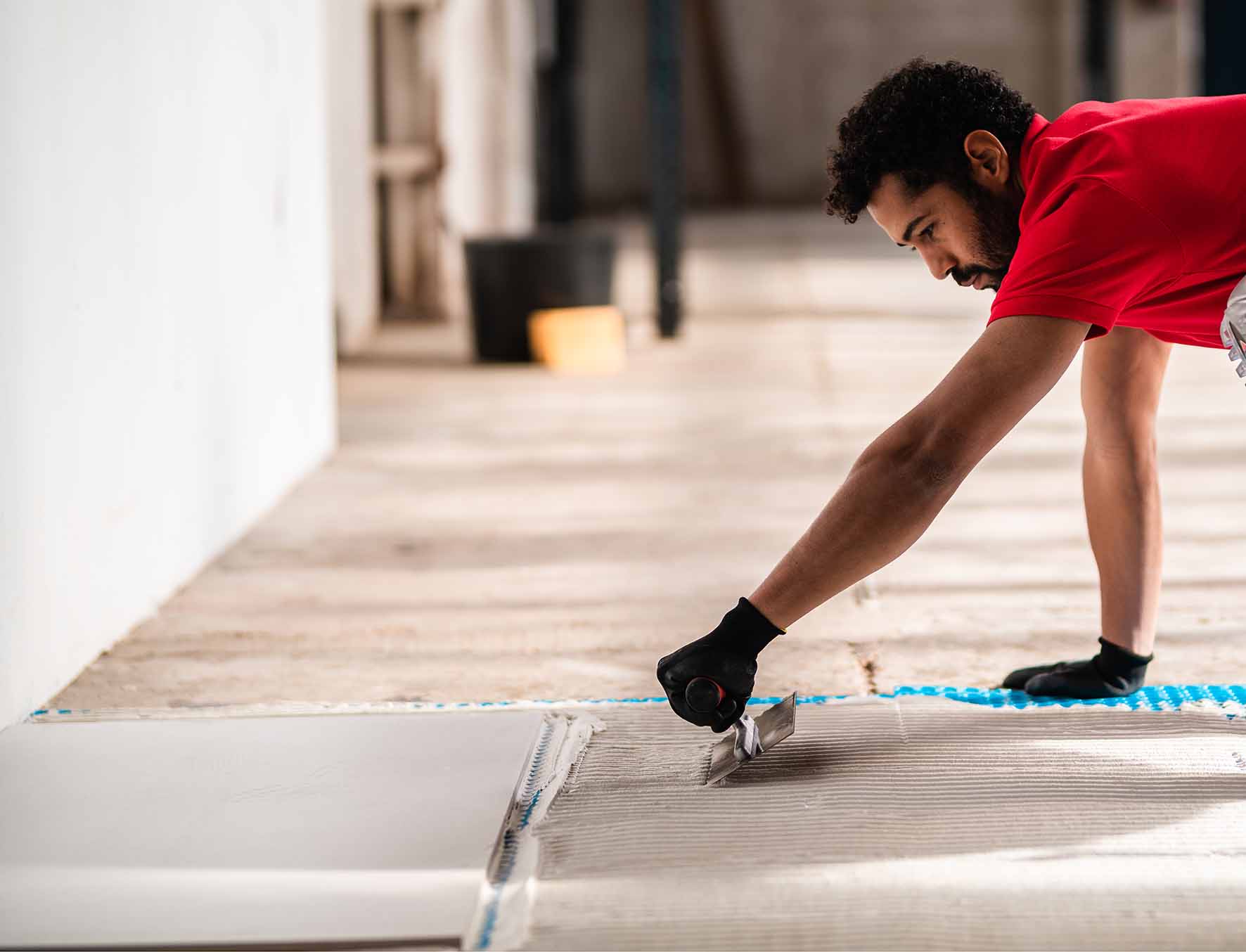
Post a comment